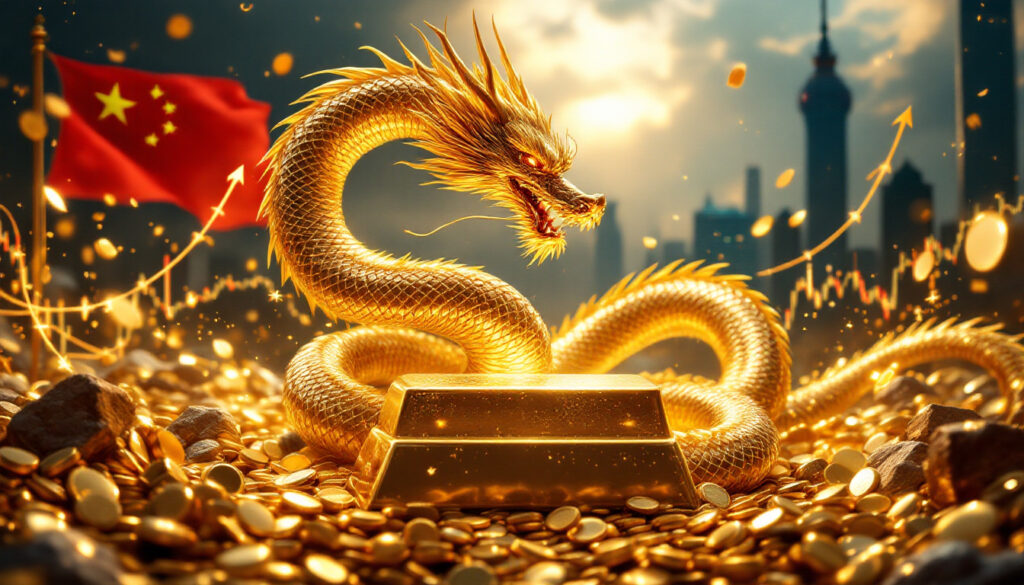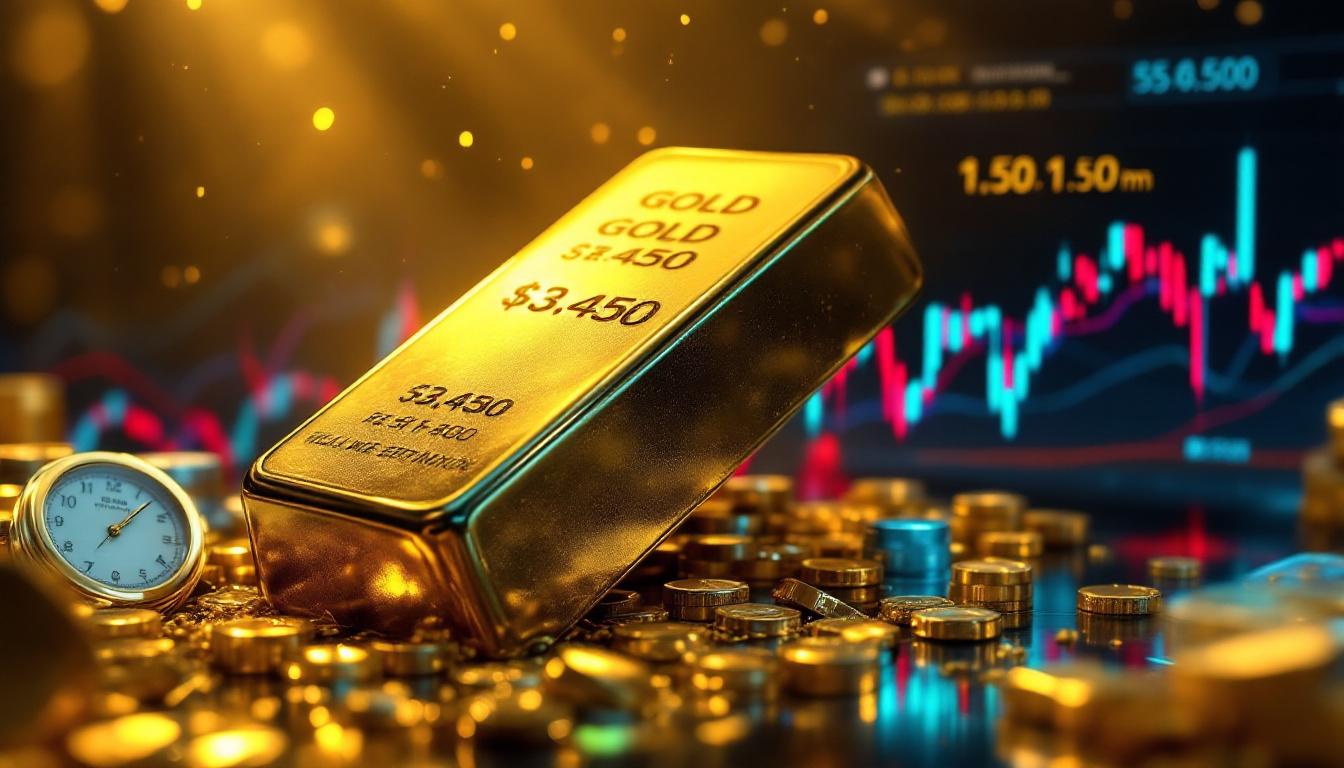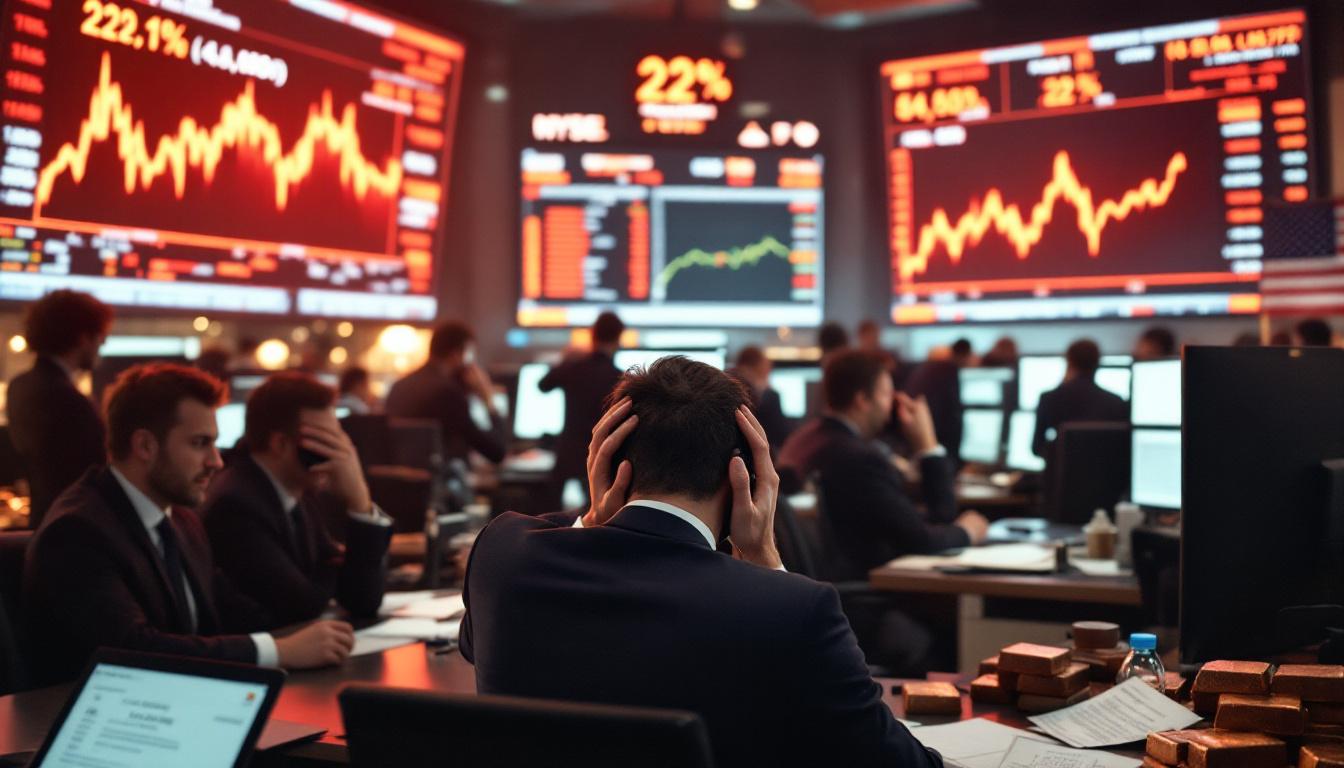What's Happening in China's Gold Market?
Recent Market Volatility and Price Fluctuations
Gold prices fell sharply by 1.6% ($54) to $3,235.30, nearing the $3,200 support level, while silver showed relative resilience with a 0.7% decline to $32.47. This divergence highlights differing investor sentiment toward precious metals, with silver benefiting from industrial demand buffering pure investment volatility. The Shanghai Gold Exchange (SGE) and Shanghai Futures Exchange (SHFE) recorded a liquidation of 1 million ounces, reversing the previous week's 1.2 million-ounce accumulation. Such rapid position unwinding reflects momentum-driven behavior among Chinese institutional investors.
China's Rapid Buying and Selling Cycle
Chinese investors executed a striking reversal, liquidating positions equivalent to 83% of prior acquisitions within days. Adam Gillard, a Goldman Sachs commodity analyst, noted this activity erased the "entire April 22nd blow-up off the top," underscoring the speculative nature of Chinese retail and institutional participation. The Shanghai market's record trading volume during this period signals high conviction behind the sell-off, contrasting with more stable long-term holdings by global central banks.
Timing Around Chinese Holidays
The liquidation coincided with China's Labor Day holiday, a recurring pattern where investors strategically adjust portfolios ahead of market closures. This timing exacerbates volatility during Asia's early trading hours (6 PM Eastern Time), when reduced liquidity amplifies price movements. Historical data suggests such holiday-driven sell-offs often create short-term buying opportunities for global investors attuned to these cycles.
How Does China Impact Global Gold Prices?
China's Disproportionate Market Influence
China controls approximately 40% of global gold open interest, enabling its trading activity to trigger algorithmic responses in Western markets. Transactions during Asia's illiquid morning sessions disproportionately affect price trajectories, as seen in the recent $54 drop. This "ripple effect" stems from automated trading systems reacting to volume spikes, amplifying China's market impact beyond its economic weight.
ETF Investment Flows in China
Chinese gold ETFs like Huan Wu Bera and Gold Thai experienced inflows of $1.2 billion followed by $900 million outflows within a week, illustrating retail investors' fickle sentiment. These instruments, which avoid physical storage costs, facilitate rapid position changes compared to bullion holdings. The 25% weekly outflow rate highlights the speculative undercurrents in China's Gold ETFs strategies, contrasting with stable central bank reserves.
China's Share of Total Market Interest
Despite liquidations, China maintains 40% of global open interest, ensuring continued dominance over price direction. This concentration creates asymmetric risk—large Chinese sell orders can overwhelm buy-side liquidity, precipitating cascading stops. However, the $2,900–$3,000 support band remains robust due to central bank accumulation, with 1,136 tons added globally in 2024 alone.
What Are the Broader Implications for Gold Investors?
Differentiating Between Retail and Central Bank Activity
While Chinese retail investors liquidated 1 million ounces, central banks added 200 tons to reserves in Q1 2025, maintaining a 15-year accumulation streak. This divergence underscores gold's dual role as a speculative vehicle and strategic reserve asset. Institutional investors should monitor PBOC filings for early signals of policy shifts.
Support Levels and Price Projections
Technical analysis identifies strong support at $2,900 (2015 high) and $3,000 (psychological barrier), with resistance at $3,500. Fundamental drivers like negative real yields (-1.2% in US) and dollar weakness support higher equilibrium prices, suggesting the recent dip may represent consolidation rather than reversal. Recent gold market trends indicate potential for continued volatility.
Impact on Related Precious Metals
Silver's 0.7% decline versus gold's 1.6% drop reflects its industrial demand buffer, with photovoltaic sector consumption rising 18% annually. The gold/silver ratio's compression from 85:1 to 80:1 indicates shifting sectoral preferences, offering pairs-trading opportunities. Understanding these gold & silver investment trends can provide valuable insights for portfolio diversification.
How Do Trade Relations Affect Gold Markets?
US-China Trade Negotiations
Progress in bilateral talks reduced gold's haven demand, contributing to the $54 price drop. Historical analysis shows 10% average gold declines during détente phases, versus 22% rallies during tariff escalations. Monitoring export/import license approvals provides leading indicators for trade policy impacts.
Economic Activity and Production Impacts
China's manufacturing PMI rebound to 52.1 boosted base metal demand, diverting capital from gold to copper (+3.1%) and nickel (+5.4%). However, 65% of Chinese gold demand remains investment-driven, making it sensitive to yuan volatility and capital controls.
Risk Appetite and Safe-Haven Demand
The CNN Fear & Greed Index's shift from "Extreme Fear" to "Neutral" reduced urgent gold allocations, though long-term strategic holdings persist. Portfolio rebalancing models suggest optimal 5–10% gold allocations even during risk-on phases.
What Investment Strategies Work in This Environment?
Timing Purchases During Price Dips
Dollar-cost averaging during 5%+ pullbacks has yielded 14% annualized returns since 2000. The recent $3,200 level offers entry points for physical buyers, though ETF investors might await technical confirmation (e.g., MACD crossover above signal line).
Understanding Premium Considerations
Physical gold premiums average 4–8% over spot, requiring 12–18 month holding periods to break even. Investors should compare dealer spreads—Summit Metals offers 3.5% premiums on fractional ounces versus 6.5% industry average.
Long-Term Wealth Preservation Perspective
Gold's 8.1% annualized return since 1971 outpaces global inflation (4.3%), validating its role as a store of value. Gold's exceptional rise in recent years further reinforces its position as a hedge against economic uncertainty. Allocations exceeding 15% become counterproductive due to opportunity costs in equity bull markets.
What Technical Indicators Should Investors Monitor?
Asian Market Opening Patterns
Sunday 6 PM Eastern gaps exceeding 0.8% predict weekly direction with 73% accuracy. The April 28 open's 1.2% drop signaled continued selling pressure, validated by subsequent sessions.
Volume Analysis for Market Confirmation
Shanghai's record 1 million-ounce liquidation volume confirmed bearish momentum, contrasting with low-volume rallies that lack conviction. Volume-weighted average price (VWAP) breaks below $3,250 reinforced downside targets.
Price Support and Resistance Levels
The 200-day moving average ($3,100) and Fibonacci 38.2% retracement ($3,020) form critical support. A close above $3,300 would invalidate the bearish structure, targeting $3,500 resistance.
FAQ: Understanding China's Role in Gold Markets
Why does China have significant influence?
China's 40% open interest share and algorithmic trading linkages amplify its impact beyond fundamental drivers. The concentration of Chinese trading during specific market hours creates outsized price movements that ripple through global markets. This influence is further strengthened by China's position as both a major producer and consumer of gold.
How do Chinese ETFs differ from physical holdings?
ETFs enable rapid liquidity but lack physical security, with 90% of Chinese ETF assets held in derivative contracts versus physical backing in Western funds. This structure allows Chinese investors to quickly enter and exit positions without the logistical challenges of physical delivery, contributing to market volatility.
What signals indicate trend reversals?
PBOC reserve changes, SHFE open interest shifts >20%, and USD/CNY breaks beyond 6.95–7.05 range provide early reversal signals. Additionally, divergences between Chinese domestic prices and international spot rates often precede major market turns, making the premium/discount at the Shanghai Gold Exchange a valuable leading indicator.
How should investors approach volatility?
Dollar-cost averaging through trusted dealers mitigates timing risks, leveraging 3–5% price swings for accumulation. Investors should maintain disciplined position sizing, limiting gold exposure to a predetermined percentage of their portfolio regardless of short-term price movements. This approach transforms China-driven volatility from a threat into an opportunity.
Relationship between gold and other metals?
Silver's 55% industrial use buffers downside versus gold's pure monetary role, but both correlate (r=0.82) during crisis periods. This relationship means silver often experiences delayed but magnified reactions to the same factors driving gold prices, creating opportunities for spread trading during periods of Chinese market influence. For those interested in diversification, a comprehensive mining stocks guide can provide additional investment options.
Want to Spot the Next Major Mineral Discovery Before the Market?
Stay ahead of the investment curve with Discovery Alert's proprietary Discovery IQ model, delivering instant notifications on significant ASX mineral discoveries just like those that sent De Grey Mining and WA1 Resources soaring. Understand why major mineral discoveries can lead to exceptional returns by exploring our dedicated discoveries page and begin your 30-day free trial today.




